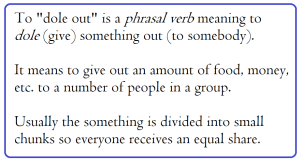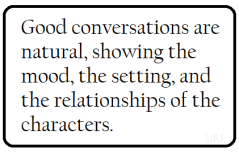The title sounds like we’re embarking on a lesson in physics. We are – in a way. We are embarking on a journey into the physics of how the written universe works. Our first dip into the atomic structure of a narrative will explore grammatical connections and how we make them.
 First up is the particle. In grammar, a particle is a word with a specific purpose that depends on the words around it. It is a function word that is always associated with another word or phrase to impart meaning.
First up is the particle. In grammar, a particle is a word with a specific purpose that depends on the words around it. It is a function word that is always associated with another word or phrase to impart meaning.
So, what is a pragmatic particle, and how does it differ from other particles? I suspect you use some form or another every day in your casual speech. English speakers use the pragmatic particle as a marker of empathy, a sound that indicates acknowledgment or agreement.
- eh,
- yo,
- right,
- oh,
- well.
Pragmatic particles are short words and sometimes are prepositions. When used in conversations, these particles can express an entire sentence’s worth of meaning with just one word.
But use them sparingly, as they are annoying if used too frequently.
Many particles are action words, so they are technically verbs. But we don’t use them as stand-alone words. We instinctively use adverbs and prepositions as connectors and phrasal verbs. Adverbial particles are words like up or out, and we use them in expressions such as “break down” or “look up” or “knock out.” (Phrasal verbs.)

Some people habitually use the word “like” as a connection between thoughts.
Many other connecting words are prepositions. Some of the most common prepositions belonging to the particle category are: along, away, back, by, down, forward, in, off, on, out, over, around, under, and up.
And what of infinitive particles, like the word “to”? It is a word that signifies an unspecified place or ending. The possibilities of what “to” indicates are infinite unless we place a noun after it. We use it to provide a sense of where something is in relation to something else. We also use infinitives to supply a sense of when something is happening and compare two ideas, and express similarities.
- to heaven
- to work
Negative particles: not, never, doesn’t
Imperative particles: do and let.
In grammar, a conjunction is a connection: a part of speech that connects words, phrases, or clauses. Conjunctions are like any other essential part of English grammar. They have a particular use, and when they are used correctly, they blend into the background. Used too freely, they contribute to longwinded prose and bloated exposition.
 Today’s readers have no patience with Tolkien’s style of paragraph-long compound sentences composed of clause after clause divided by conjunctions, commas, and semicolons.
Today’s readers have no patience with Tolkien’s style of paragraph-long compound sentences composed of clause after clause divided by conjunctions, commas, and semicolons.
However, common conjunctions do have a place in our writing. They connect short, related sentences, preventing choppy, uneven prose.
And there are many other kinds of conjunctions.
What are coordinating conjunctions?
The Fount of All Knowledge, Wikipedia, says:
Coordinating conjunctions, also called coordinators, are conjunctions that join or coordinate two or more items (such as words, main clauses, or sentences) of equal syntactic importance. In English, the mnemonic acronym FANBOYS can be used to remember the coordinators for, and, nor, but, or, yet, and so.
Here are some examples of coordinating conjunctions in English and what they do:
For – presents a rationale (“They do not gamble or smoke, for they are ascetics.”)
And – presents non-contrasting item(s) or idea(s) (“They gamble, and they smoke.”)
Nor – presents a non-contrasting negative idea (“They do not gamble, nor do they smoke.”)
But – presents a contrast or exception (“They gamble, but they don’t smoke.”)
Or – presents an alternative item or idea (“Every day they gamble, or they smoke.”)
Yet – presents a contrast or exception (“They gamble, yet they don’t smoke.”)
So – presents a consequence (“He gambled well last night, so he smoked a cigar to celebrate.”)
Finally, we have correlative conjunctions. These words work in pairs to join words and groups of words of equal weight in a sentence. There are many different pairs of correlative conjunctions, but here are a few we often use without thinking about it:
- Either / or
- not only / but (also)
- neither nor
- both / and
- whether or not
- just as so
- as much as
- no sooner than
- rather than not / but rather
Connecting words and phrasal verbs bind our prose together. They can create run-on sentences, but they can also smooth out choppy passages.
 I try to limit idioms and phrasal verbs to speech, and then only to that of one character. When used in conversation, they sound natural, but even there, I go lightly. I want to show a specific character’s personality but don’t want my prose to feel cliché and overdone.
I try to limit idioms and phrasal verbs to speech, and then only to that of one character. When used in conversation, they sound natural, but even there, I go lightly. I want to show a specific character’s personality but don’t want my prose to feel cliché and overdone.
We must use connecting words to ensure our narrative is easy to read and not too rough and uneven. But we must also avoid run-on sentences and tortuous paragraphs. When sprinkled too heavily throughout the narrative, idioms and phrasal verbs contribute to wordiness, bloating the prose.
Next up we’ll have a look at the quantum mechanics of grammar and the way to make those universal laws of physics work for you.
Credits and Attributions:
Wikipedia contributors, “Conjunction (grammar),” Wikipedia, The Free Encyclopedia, https://en.wikipedia.org/w/index.php?title=Conjunction_(grammar)&oldid=1076464370 (accessed March 31, 2022).








Reblogged this on Chris The Story Reading Ape's Blog.
LikeLiked by 1 person
Thank you for the reblog, Chris ❤ 😀 ❤
LikeLiked by 1 person
Welcome, Connie 🤗❤️🤗
LikeLike
An excellent explanation. Thank you.
LikeLiked by 1 person
❤ Thank you for stopping by!
LikeLike
Reblogged this on Kim's Musings.
LikeLiked by 1 person
❤ Thank you for the reblog, Kim ❤
LikeLiked by 1 person
My pleasure 🙂
LikeLike
Reblogged this on NEW BLOG HERE >> https:/BOOKS.ESLARN-NET.DE.
LikeLike
Pingback: How the Written Universe Works part 3: Lay, Lie, Laid #amwriting | Life in the Realm of Fantasy
Pingback: How the Written Universe Works part 4: Relativity and Possessives #amwriting | Life in the Realm of Fantasy
Pingback: How the Written Universe Works: ellipsis, em dash, hyphen, semicolon #amwriting | Life in the Realm of Fantasy
Pingback: How the Written Universe Works part 6 – modifiers, descriptors, and quantifiers #amwriting | Life in the Realm of Fantasy